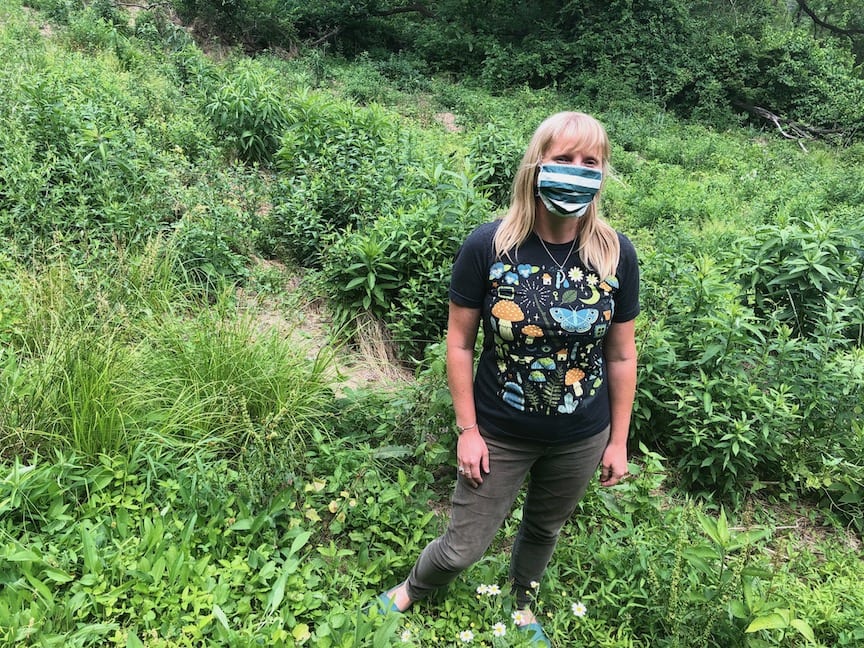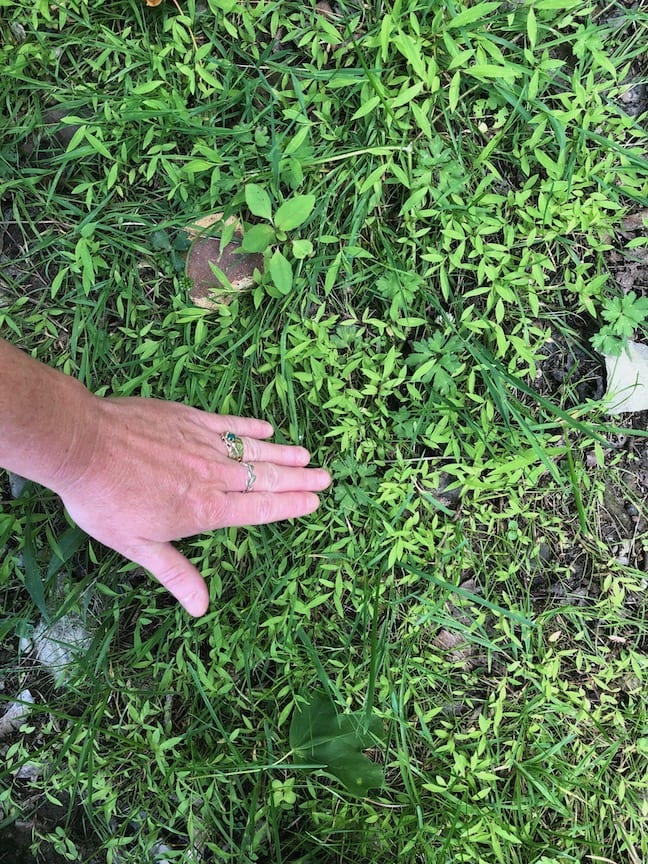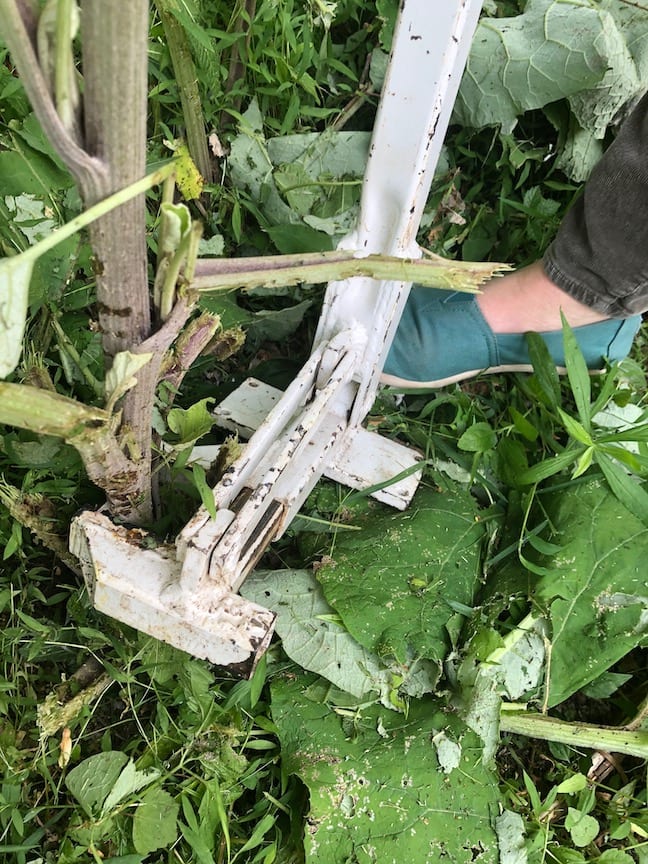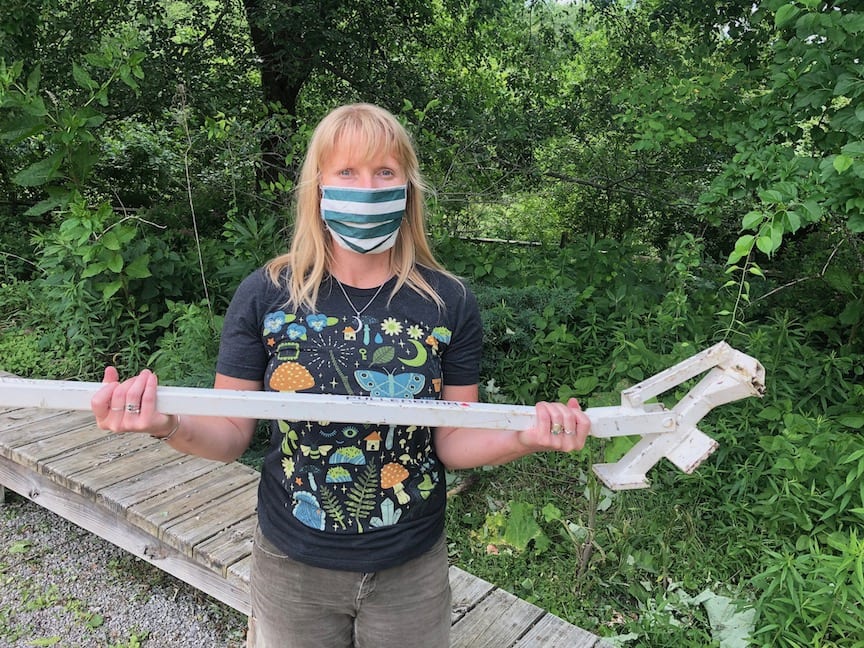
Gardening Green with Doug — Outsmarting Invasive Species in Western Pennsylvania
By Doug Oster
August 11, 2020
Sarah Koenig just can’t get her face mask to cooperate on this day—something most of us have dealt with over the last few months. “I think I need a new mask,” she says with a laugh.
Koenig is conservation director of the Audubon Society of Western Pennsylvania. As we sit across from each other on the back porch at Beechwood Farms in Fox Chapel, she explains the seriousness of battling invasive plants here and for gardeners at home.
“It’s really important to make informed choices about what you are planting in your yard,” she says. “Barberry and privet, you can still buy them in a nursery. If you go into the woods, we see that they have entirely invaded the understory.”
There are lots of other plants available at garden centers too that often escape into nature such as vinca vina, honeysuckle or ajuga.

At Beechwood Farms they are using many interesting techniques to rid the property of invasive species—something home gardeners also struggle with as well. Beechwood was actually a working farm at one time and when the soil is disturbed it can often give way to unwanted varieties, which can push out favorable native plants.
“We want as many natives as possible,” Koenig adds, “and we want biodiversity.”
It’s important to understand what’s at stake here and she gives an example why.
“A native oak tree supports over 500 species of lepidopterous (a group of insects comprising the butterflies, moths, and skippers). Ginko is a non-native and supports just two to five types of caterpillars.”
STILTGRASS
One project is dealing with a half-acre of stiltgrass, funded by Patagonia Pittsburgh. It’s an annual bright green grass with a short, flat bamboo-like blade. Anyone who has dealt with an infestation in their lawn knows how hard it can be to get rid of. At Beechwood the weed was mowed right before it goes to seed, which is in late summer.
“It doesn’t have the ability to continue growing that season,” says Koenig of this invasive.
Volunteers went after the base of the plant and sort of rolled up the matted roots. The area was quickly planted with a wildflower mix, along with black-eyed Susans.
“To my delight and some surprise, the whole area is black-eyed Susans, along with native wildflowers,” Koenig says.
When restoring an area, Koenig adds that working fast is the key to getting the good plants established and not allowing the invasive to grab hold again.
“If you pull and don’t replant, they’ll come right back,” Koenig says of the invasives.
Since the stiltgrass is an annual, another technique used is an organic control called corn gluten meal. It’s a safe type of pre-emergent herbicide, which stops seeds from completing the germination process. The seed will sprout, but the corn gluten dries it out, so it dies. The trick to using corn gluten is to apply right before the seed germinates. In the case of stilt grass that would be early spring. The same tactic works for crabgrass, too.
The team at Beechwood has made progress around the property by using restoration grants, other funding, and volunteers to replant and manage these areas. The Pittsburgh Foundation is helping to enhance and expand meadow habitat.
MUGWORT
Mugwort is as invasive as it gets. A member of the artemisia family, it’s a fragrant weed which sort of smells like mums. Koenig’s team follows the recommendation of the DCNR to pull the weed early and then replant with an aggressive native.
“We’ve had some really great luck with oxeye sunflower, wingstem, and three lobed coneflower,” she says of the replanting. The natives take hold, spread and eventually colonize the planting area.
SHRUBS
To deal with shrubs like privet and barberry, she’s using a specialty tool.
“We’ve invested in these weed wrenches that are incredible,” says Koenig. The tool can remove an entire root ball, it’s basically a type of heavy duty lever pushed into the soil at the base of the plant to pry it out of the ground.”

VARIOUS METHODS
Solarization is a process of covering an area with clear plastic, usually for a month or more to kill invasives.
Another method, horticultural vinegar (more potent than the variety used in the kitchen) can work for spot treating invasives. Just remember it will kill any plant it touches.
Deep mulching an area with four to six inches of thick mulch and then planting in the material as it decomposes is another way to deal with plant invaders.

ASIATIC BITTERSWEET
The vine is probably best known to homeowners for it’s colorful berries, but this monster can bring down a tree once established. At Beechwood when they are small, the entire plant is removed, but it’s another story when they’re growing up a large tree. In these situations, the plant is cut as low as possible and also as high as possible. The vine will dry out without support from the roots and this sets the plant back several years.
BEECHWOOD CONSERVATION CORPS
“Even after you do these restoration projects, Koenig says, you need to continue to maintain them or they are not going to be as successful. You have to be committed to it long term.”
That’s one reason the Beechwood Conservation Corps was launched. Members adopt a section of Beechwood and get training, support, and resources from Audubon to help improve and maintain those projects. It’s a way to take ownership of part of the area and make a difference.
“It’s a nice way to get outdoors and make a positive impact where you can see the results,” she adds.
There are areas all around Beechwood Farms where invasives have been replaced by tough and beautiful indigenous plants.
“We’re going to begin to win the battle, says Koenig confidently, “We’re making progress. Hopefully there will be even more natives.”
For more information go to www.aswp.org
![]()

Thank you! I did find some stiltgrass in my flower beds. Yep it looks like bamboo. I hope I’ve licked it!
What about Japanese Knotweed? Is there anything that kills it?
I am fighting Canadian thistle. I heard you spray twice in fall and prevent from going to seed. What is best to spray with to kill it and when in fall should I use it?